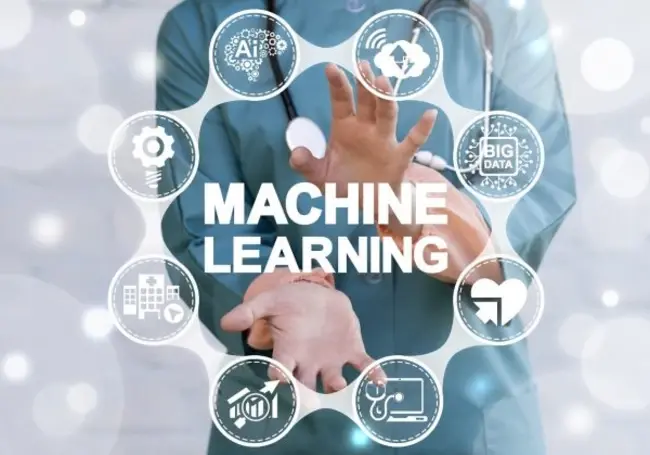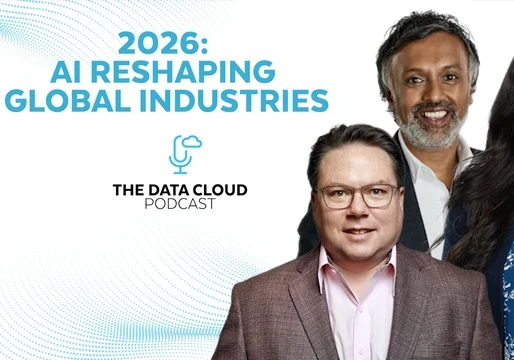Machine learning, as many readers will know, is a branch of artificial intelligence. It’s essentially a method of programming which gives computers the ability to learn something on their own. So, it’s like teaching the computer how to fish instead of just feeding it fish all the time. So, then, after it’s learned to fish, if you ask the computer a question, or ask it for a fish, its answer, or the fish, doesn’t have to be in its memory banks – it can go and catch a new fish, or just make one up based on the information about fish it has already acquired. This is like the example of Google’s DeepMind algorithm creating entirely new images of cats, people and other images based on the millions of images of cats, people and whatnot it had already seen. The new images the algorithm was creating were not exact replicas of any it had seen, and quite frankly they were terrible, but you get the idea.
A lot of people use the famous example of IBM’s Watson AI computer going on to the popular US quiz show called Jeopardy! as a demonstration of AI, or perhaps machine learning. But maybe that was more of a memory test. After all, Watson had downloaded the entire contents of Wikipedia and other databases before it went on Jeopardy!. True, it had to extract single-word answers from complex Wikipedia sentences which may not have exactly matched the question, so it had some work to do, but there are better examples of machine learning and AI.

Artificial Intelligence or Total Recall?
Essentially, the value of a machine-learning model is its possible “predictive” capabilities. These predictions could be based on actual numbers and facts, rather than the equivalent of pure guesswork or crystal-ball gazing. For example, you could programme machine-learning model to learn all your business numbers – your cash flow for the past 12 months, for example – and then ask it to make forecasts based on what it has learned. This is clearly different from asking what marketing initiative or which salesperson earned the most money in a particular period of time in the past year – such a question would be asking for a “descriptive” answer.
This type of application would make machine learning particularly useful in business intelligence software, so it’s understandable that many business intelligence platforms are incorporating machine learning capabilities. SAP, which is said to be Europe’s largest software company, has a cloud-based business intelligence platform which can spot trends in the sales activity of a business across its entire operation. SAP’s Hana cloud-based business intelligence software can ingest, or take in, data about sales transactions from a wide variety of sources – from mobile devices, desktop computers, and in-store cash tills, if they’re connected, of course. If you want it to, you can have it describe what is happening, but what might be even more crucial to the profitability of a business is having it provide some predictions. Most, if not all, business intelligence platforms can either do these things now or will be able to in future.
So long, and thanks for all the fish
But sticking with SAP for the moment seems appropriate given that it’s a German company and the industrial sector in Germany is seeing more tumultuous technological change than most other sectors of business worldwide. Germany, as is well known, has a huge manufacturing sector, in which we can include engineering companies such as Siemens, Bosch and so on – all of which have been going on about something they call Industry 4.0, or the fourth industrial revolution, or more simply “digitalisation”, which basically refers to the trend of many businesses in sectors such as manufacturing, logistics, and others putting their equipment online. Until recently, all of these companies used machinery – robotics and automation and other machinery and power tools – which were not connected to the internet. They were entirely mechanical and only used electricity to power them. It’s been like this for centuries for the older types of machinery. But now, they are increasingly integrating sensors which are collecting data about how they are performing. These sensors could, in theory, send data back all the way up to the business intelligence platform, providing even C-level executives with a continuous, shopfloor-level, microcosmic, or perhaps granular, view of the entire operation. It’s not as simple as that, of course – a variety of hardware and software is required to create or engineer such an integrated system, even if you contract one single company to set it all up for you.
All the big industrial companies now offer connectivity platforms which are already huge and still growing. GE Digital’s Predix platform is the biggest, but Siemens’ MindSphere is said to connect 30 million devices, so that must be a close second at least. Bosch, Honeywell, and many others, also have huge, global operations, so their platforms are also correspondingly busy.
Simple MindSphere
Predix, MindSphere and the others are not business intelligence platforms, however. They are platforms to provide insight into what is referred to as “operation technology” – meaning the robots and other machines. There are still many new hardware and software solutions emerging which are trying to efficiently connect operation technology with information technology, or IT, which is obviously more well known.
But technical challenges aside, all that data that the machines were previously incapable of capturing is now being collected, stored and analysed, and that’s making industrial companies much more efficient.
Even just using the “descriptive” capabilities of such data-collection systems, a business can save a lot of money simply by, for example, switching off machines that are not being used for one or two hours a day, or however long. That one single, simple thing can save a large factory, or chain of connected factories, thousands every month. That’s an obvious example, but much more can be done, and is being done. And all of that before calling on the “predictive” capabilities of machine-learning systems. The most-often-cited example of predictive analytics in an industrial setting is that of a sensor which notifies the factory or business manager about a machine that is perhaps not performing as expected or required.
Maybe the machine is slower, or less accurate, perhaps because one of its components have worn out. If that is the situation, obviously a new component can be ordered and downtime can be scheduled to get the machine fixed. This enables a business to plan downtime rather than have the machine break down at perhaps a crucial time, without warning, and potentially create havoc.
Multi-dimensional computational whatnot
Some industrial companies are developing deep learning capabilities for their machine networks, but it’s probably not necessary to go into the differences between AI, deep learning and machine learning – that’s more of a computer science, or data science, issue. For a business manager, the important questions that the new technology can answer are: What has happened in my business so far? What is likely to happen in my business going forward?
There is yet another, higher level that AI, machine learning, and deep learning can take businesses to, and that is generally called “prescriptive”, meaning it can answer the question: What are my options for improving the business?
It may return only one option, but it’s probably better that it comes up with a few because, one, you want to at least feel like you’re in control even if you’re not and the system is; and, two, there would always be that nagging doubt as to whether that single prescription really is the best solution – you probably want to decide that for yourself. Ultimately, humans are still more intelligent than computers, meaning they can make better decisions.
UK government to accelerate digitalisation
In the UK, which is one of the top 10 manufacturing nations in the world, the government has completed a wide-ranging review which looked into the digitalisation of industry. Digitalisation, as mentioned earlier, essentially refers to the idea of collecting data from machines that were previously not connected to sensors or any networks.
For words
Commenting on the government’s Industrial Digitalisation Review, Professor Juergen Maier, CEO of Siemens UK and Ireland, who wrote the foreword to the Made Smarter report, says: “The business and academic community has set out a vision for much greater ambition needed for Britain to be a world leader in the fourth industrial revolution. “Industry is committed to working in partnership with Government, and this combined package of measures will boost UK growth and productivity in manufacturing and provide more exports and increased earning potential, which our economy desperately needs. “Our Made Smarter proposals will help business understand, deploy and create the latest digital technologies, helping to secure more homegrown R&D and the creation of new industries and highly skilled well-paid jobs. “The proposals build on the UK’s natural technology strengths, whilst setting out a framework to encourage entrepreneurs to develop new technologies that help manufacturers. “I look forward to working with Government to consider the recommendations, including those that can be taken forward as part of an ambitious sector deal.” The government’s business secretary, Greg Clark MP, says: “The UK manufacturing sector has the potential to be a global leader in the industrial digital technology revolution. “Government and industry must work together to seize the opportunities that exist in this sector and promote the benefits of adopting emerging digital technologies, as well as cutting-edge business models. “I welcome the Made Smarter report that has been published today and thank Juergen and the reviewers for their work in outlining the huge potential digitalisation offers to this important sector. I look forward to working closely with industry to secure an Industrial Digitalisation Sector Deal.”
Mass observations
Here’s a collection of quotes from some quite high-level, powerful business leaders on the subject of the government’s Made Smarter report. CBI’s director general, Carolyn Fairbairn, says: “The business community has pulled together to shape these recommendations that will speed up technology adoption and bring new energy to the manufacturing sector. “The UK must compete with China, the USA and much of Europe where there are already advanced plans to embrace the fourth industrial revolution. I urge the government to consider these plans carefully, as they are focused on increasing productivity and wages, especially in smaller businesses.” Sean Redmond CEO of Vertizan, a digital and software SME, says: “Smaller businesses that are growing at scale, especially industrial companies need support learning about how digitalisation can help their business grow. “The proposals could help the UK to catch up with international competitors who have long sought to take advantage of this new industrial revolution. We want to make industrial digitalisation accessible, understandable and practically useful to firms up and down the country.” Innovate UK chief executive Ruth McKernan says: “This comprehensive review sets out practical recommendations around digital skills adoption, leadership and innovation. Maximising opportunities from industrial digitalisation massively boosts productivity and UK competitiveness. “The innovation eco-system has a key role to play in delivering the ambition in this Review and Innovate UK stands ready to work with government and industry to drive forward the recommendations Juergen Maier sets out.” Olly Benzecry, UK & Ireland managing director at Accenture, says: “The transformational impact of digital technologies that we witness in the world of the consumer are just as applicable to industry.
The opportunities to the UK economy are significant in terms of economic growth, increased productivity and jobs. “The Made Smarter review has been led by UK industry and recommends a series of bold actions by which Government, working in partnership with industry, can make a real difference to our industrial future.” Graeme Wright, CTO for manufacturing, utilities, and services at Fujitsu, says: “The recommendations made in this report are a step in the right direction, and we hope they do come to fruition.
The clamour for traditional industries to move into the digital age is mounting, with governments, businesses and trade associations alike calling for action. “We recently took the pulse of UK businesses’ ability to enact digital transformation, and alongside a shortage of skills, we found that 1 in 4 organizations have experienced a failed digital project in the last two years - at an average cost of £450,000. “What this shows is that it’s no longer enough just to have the best applications and devices; without talented and capable people to use them, they are meaningless. “You may have the brightest and most progressive people, but they will flounder in a culture that stifles innovation. And no business – no matter how big, how influential or powerful – can hope to stand alone and succeed in the world of tomorrow. “For these innovation centres to be successful they’ll need to offer end-to-end support to industrial players, and prioritise innovation by facilitating strategic co-creation partnerships. “To realize their digital vision, it’s crucial that businesses have the right skills, processes, partnerships and technology in place. With digital disruption rapidly changing the business landscape, a balance of these four ingredients has never been more important.” Matt Bird, general manager of InLinkUK, which partners with BT on payphone networks, says: “We welcome the findings of the Industrial Digitalisation Review. The UK has a great foundation, with impressive skills, insight and equity in the space. “With this, it needs to take a leading role in the fourth industrial revolution by embracing advanced technology and securing its position as a digital leader. “Unrestricted connectivity, such as that provided by InLinks, creates countless opportunities and feeds into the necessary infrastructure to deliver connected, smart cities, allowing the UK to lead the way and become the smart nation.”







Comments ( 0 )